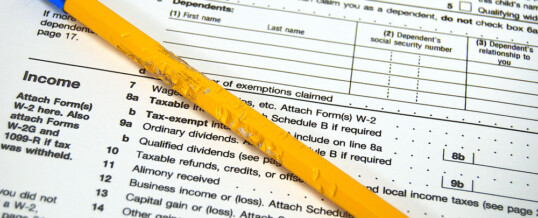
The IRS has announced a new optional safe harbor method, effective for tax years beginning on or after January 1, 2013, for individuals to determine the amount of their deductible home-office expenses. Hailed by many as a long-overdue simplification, taxpayers can now determine their deduction by simply multiplying a prescribed rate by the square footage of the home office.
Over three million taxpayers in recent years have claimed home-office deductions, which normally require a 43-line form. Now, a significantly simplified form is used. The new method is expected to reduce paperwork and record keeping for small businesses by about 1.6 million hours annually.
The new optional deduction is limited to $1,500 per year, based on $5 per square foot for up to 300 square feet.
You’ll have to wait until the next tax season to take advantage, but it’s important to start investigating pros and cons and whether or not you qualify now.
Basic Home Office Deduction Rule
Under Code 280A, a taxpayer can deduct expenses on a portion of the home that’s exclusively used on a regular basis. This generally means:
- The taxpayer’s principal place of business for any trade or business
- A place to meet with the taxpayer’s patients, clients, or customers in the normal course of the taxpayer’s trade or business, or
- In the case of a separate structure not attached to the home, in connection with the taxpayer’s trade or business.
Unfortunately, the requirement to keep records showing that you do, indeed, use your home office as described above has not been removed. It does help, however, in other ways.
Simplified Safe Harbor
Taxpayers who itemize their returns and use the safe harbor method may also deduct, to the extent allowed by the Tax Code and regs, any expense related to the home that is deductible without regard to whether there is a qualified business use of the home for that tax year, the IRS explained. As a result, they will be able to claim allowable mortgage interest, real estate taxes, and casualty losses on the home as itemized deductions on Schedule A of Form 1040. These deductions do not need to be allocated between personal and business use.
Depreciation
Depreciation is the largest component of the home office deduction under the regular method, but if you’re using the new, simplified method, depreciation is now off-limits. Depending on the value of your home and the home-office square footage, using the old method may be the better choice.
Election
Taxpayers may elect (from tax year to tax year) whether to use the safe harbor method or actual expense method. Once made, an election for the tax year is irrevocable. The IRS has provided rules for calculating the depreciation deduction if a taxpayer uses the safe harbor for one year and actual expenses for a subsequent year. The deduction of expenses that are not related to the home, such as wages and supplies, is unaffected and those deductions are still available to those using the new method.
Limitations
The IRS set various limits on the safe harbor, including:
- Taxpayers with more than one qualified business use of the same home for a tax year and who elect the safe harbor must use the safe harbor for each qualified business use of the home.
- Taxpayers with qualified business uses of more than one home for a tax year may use the safe harbor for only one home for that tax year.
- A taxpayer who has a qualified business use of a home and a rental use of the same home cannot use the safe harbor for the rental use.
MAR




